Shimla + Sarahan – Rani, Kali and Bhimkali
16. + 17. September 2023
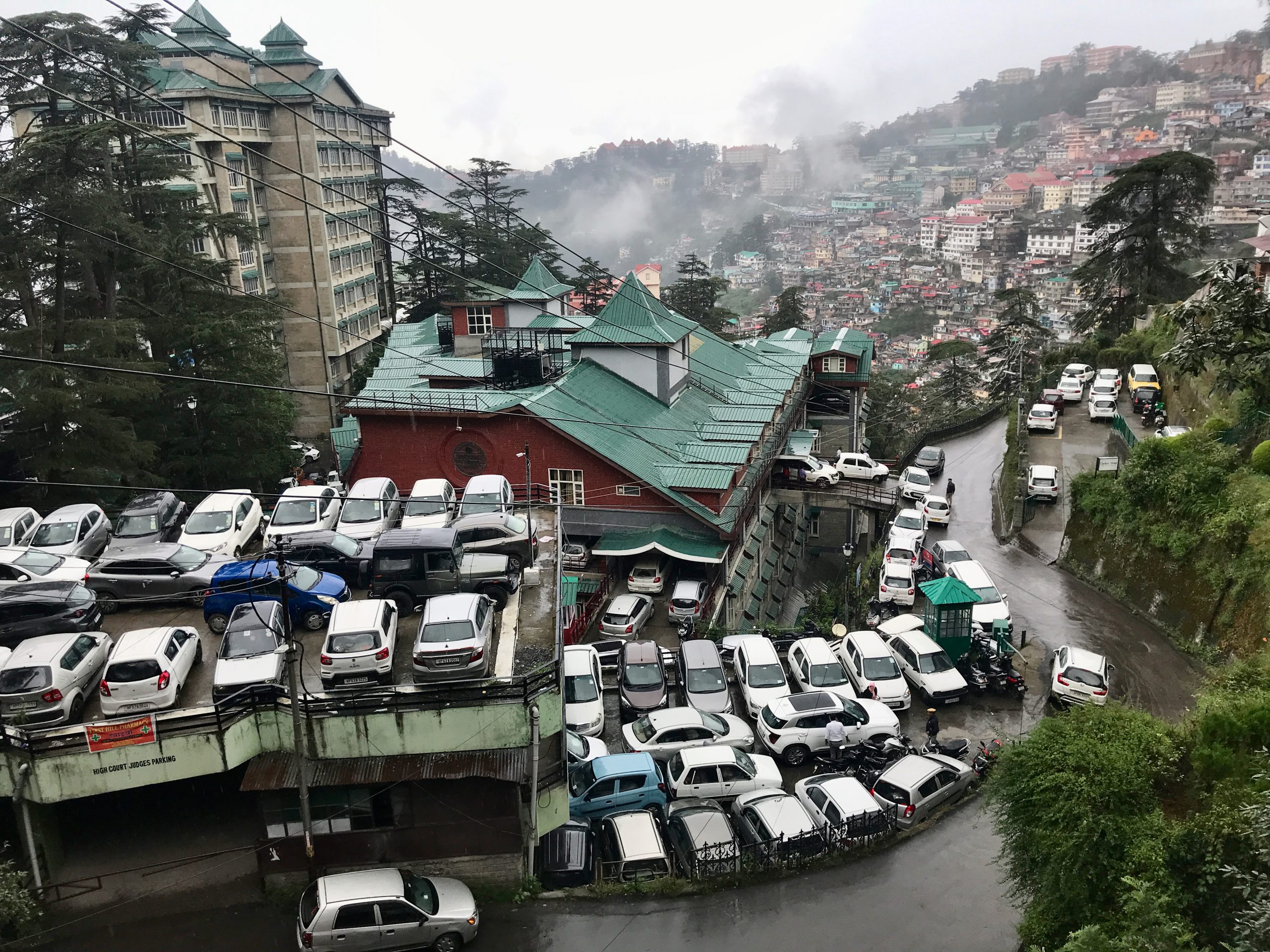
Shimla did not start badly. We had found a very good deal with an accommodation that even let us check in around 9:30. Exhausted, we sank into fine beds and slumbered for a while. Afterwards, we started our little Shimla exploration. I had been here a few times before and found the place neither particularly great nor bad. That was confirmed this time as well. What I found very good: The pedestrian area has been extended and thus one can walk around a lot without honking vehicles. It was raining, drizzling and cloudy with pleasant temperatures and we breathed a sigh of relief after the stress of Delhi. However, the masses of houses on the slopes don’t really look that nice.
We came to a kind of “women’s park” with some statues of women and a building with a women’s project. This woman on a horse was striking:
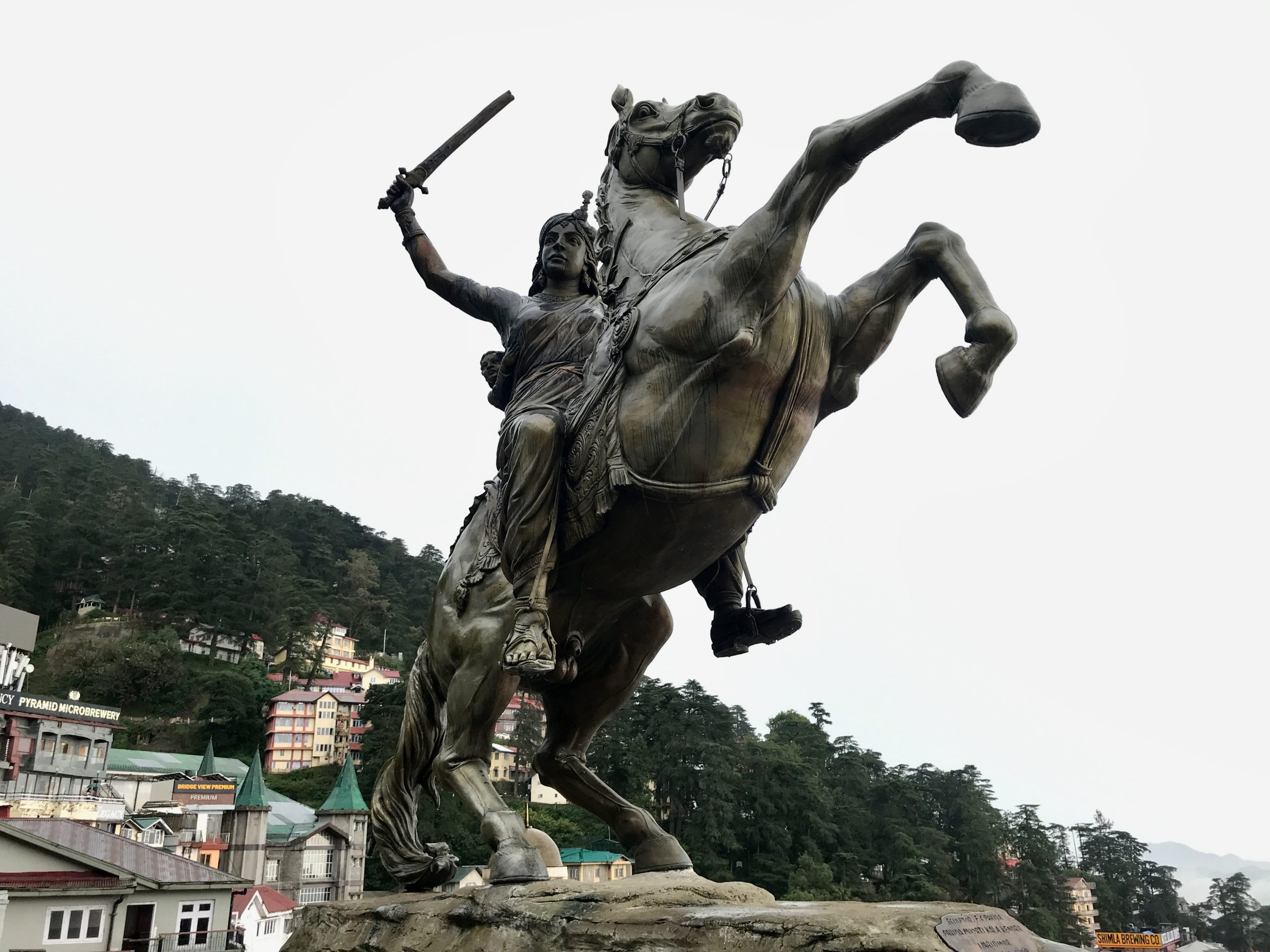 1
1
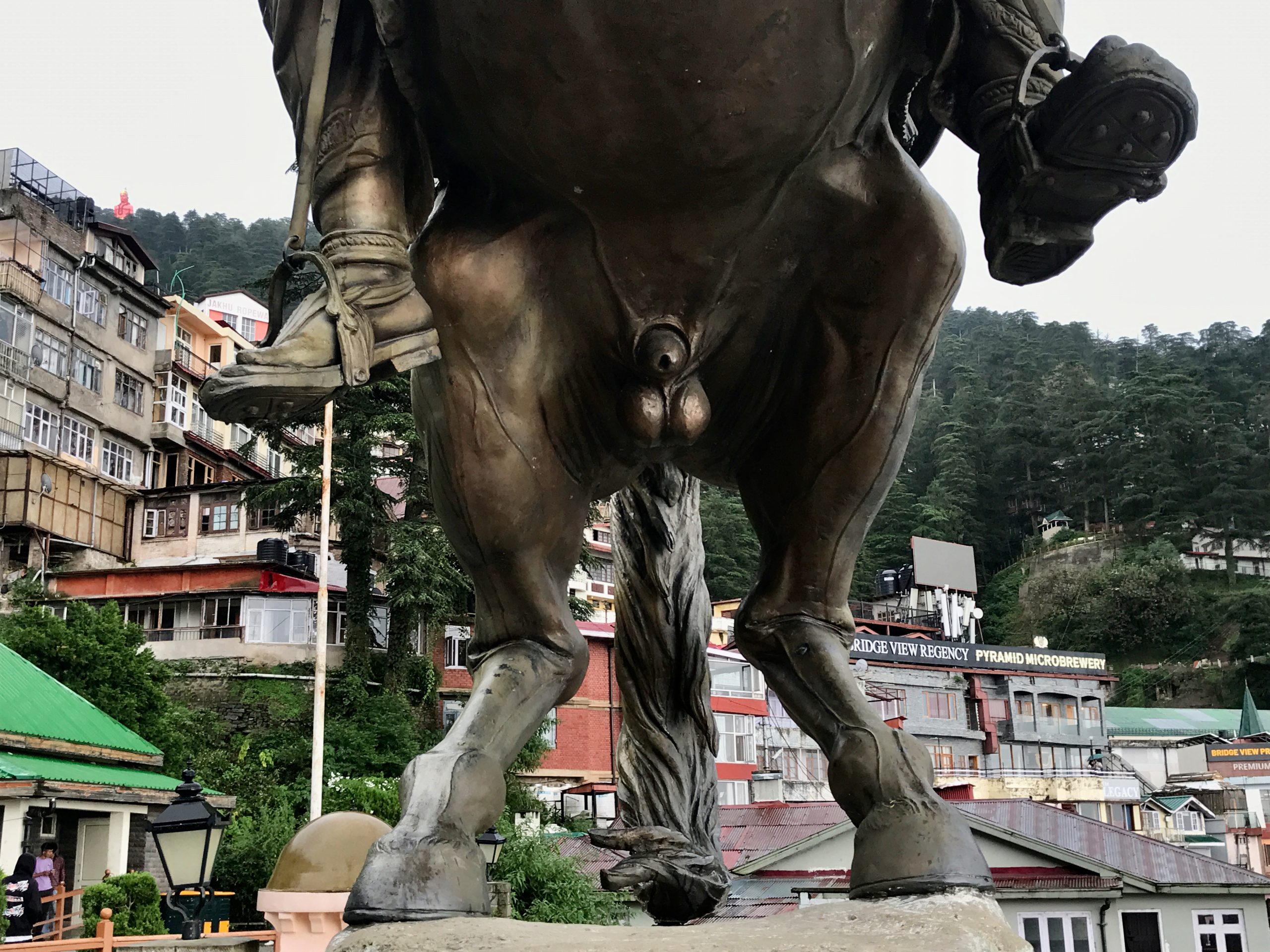 2
2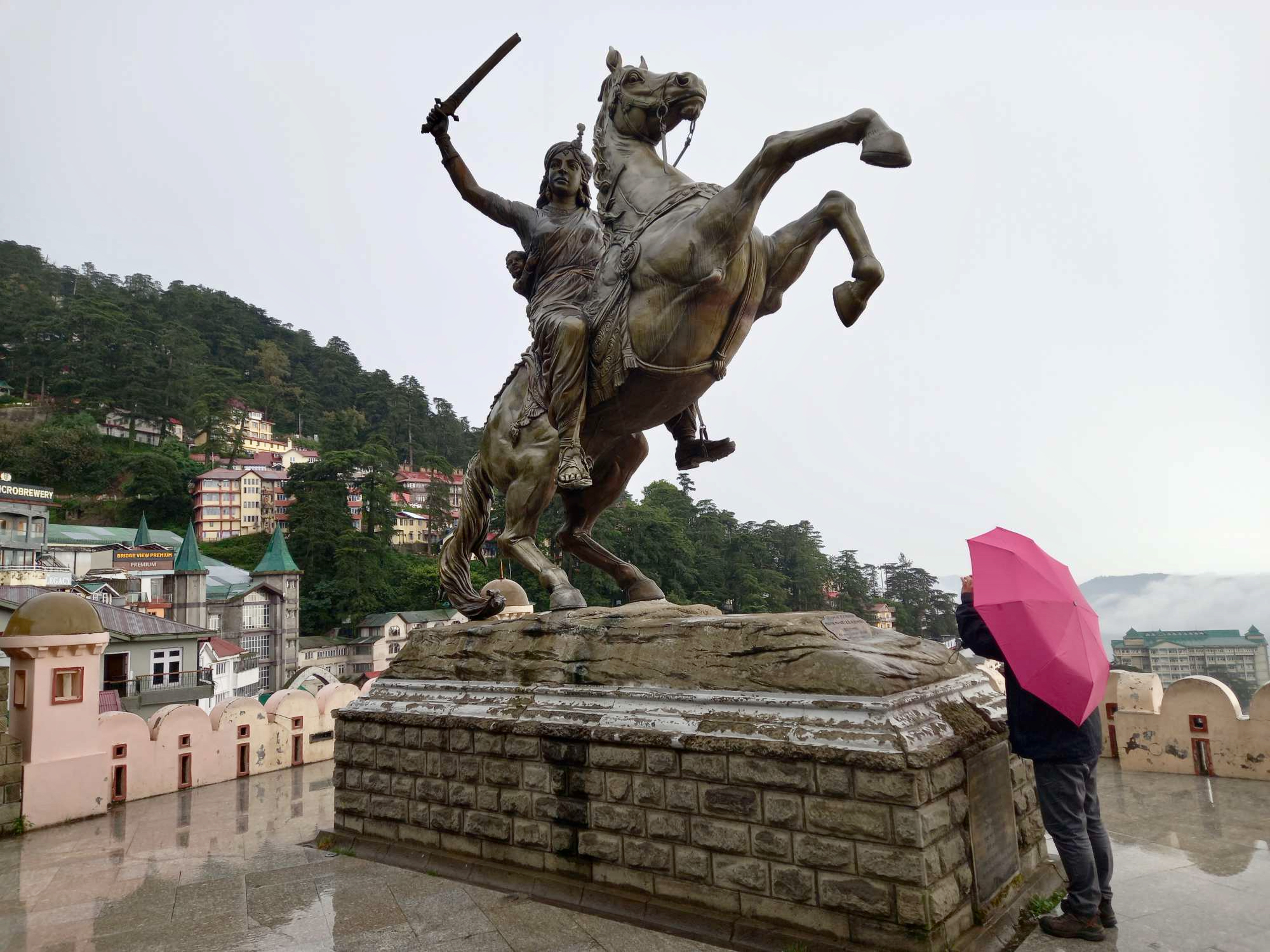 making of
making of
This is the Rani of Jhansi, India’s first national heroine. She was married to the Maharaja of Jhansi in 1843, when she was 15 years old. Her first child, born in 1851, died shortly afterwards. Two years later, her husband died. 1 day before his death, they adopted another boy and asked the ruling British to treat him with respect and recognise him as heir to the throne. Until he became an adult, the Rani was to rule. However, the British did not find this correct according to their legislation (only natural male heirs were allowed) and wanted to annex her territory as early as March 1854. She was allowed to stay in the palace, however, and was provided with an annual pension.
She was different from the other girls from childhood and practised weightlifting, wrestling and steeplechase. In 1857, there was the great Indian uprising and a bit of a confusion with her in Jhansi, where various Britishers were murdered by Indians. Exactly what role she played then is not clear to me through several sources. But when the British wanted to take revenge for the massacre in 1858, she led the insurgents. The British won, she had to flee, joined other insurgents and fought on. Most of the battles were lost, but the Rani always escaped – until she died in a battle after about 3 months. She always fought on her horse and at least often had her 5-year-old adopted son with her. This is what the statue in Shimla represents.
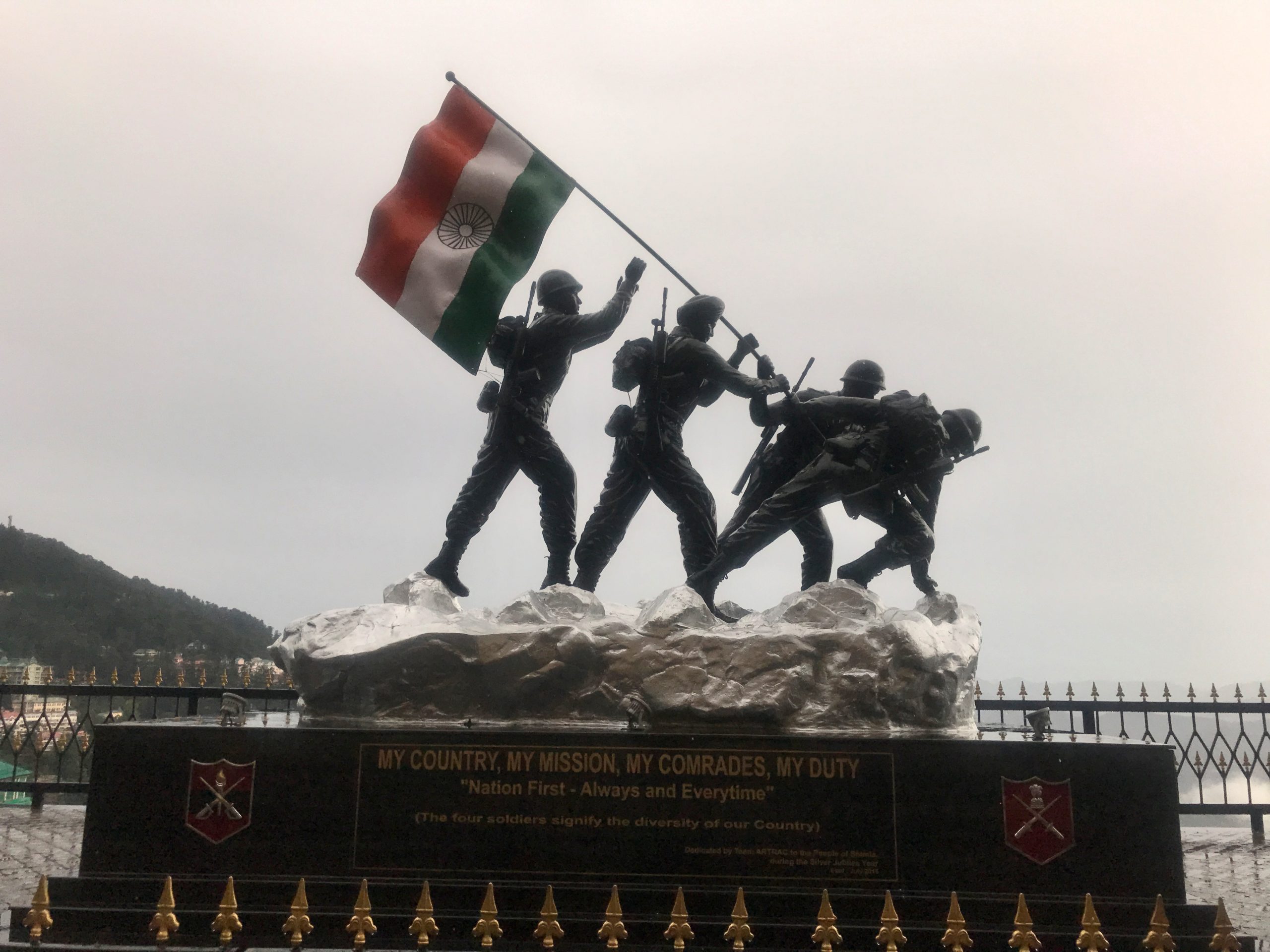 other Statue
other Statue
 rain puddle
rain puddle
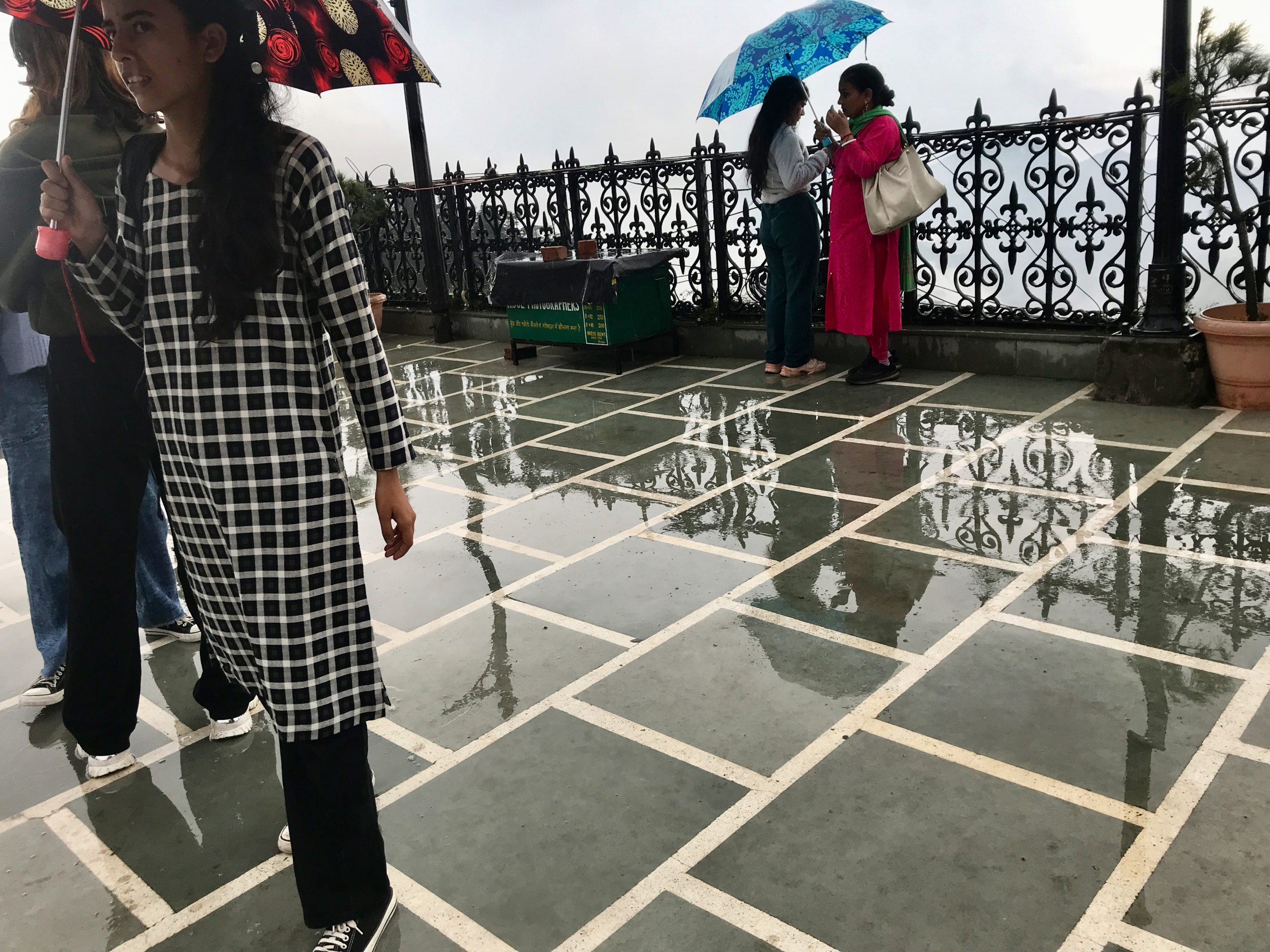 On the Ridge
On the Ridge
What else was remarkable in Shimla: there were hardly any money exchange possibilities and the few that existed had a much worse exchange rate than in Delhi. Of the banks, only one wanted to change something and a nice, eager and busy gentleman in the basement was able to be bargained up a very small amount with his exchange rate.
What really takes a lot of time and energy when travelling individually are the decisions regarding places, accommodation and means of transport. Our next destination was supposed to be Sarahan on the way to Spiti, a mere 150 km away, which would involve quite a bit of driving. It was not easy to find out what bus options were available and in the end we opted for a 5:00 Volvo bus for convenience and early arrival despite the increased price including the early morning taxi to the bus station. Everything worked even if the orientation at the bus station was confusing at first. It rained a little.
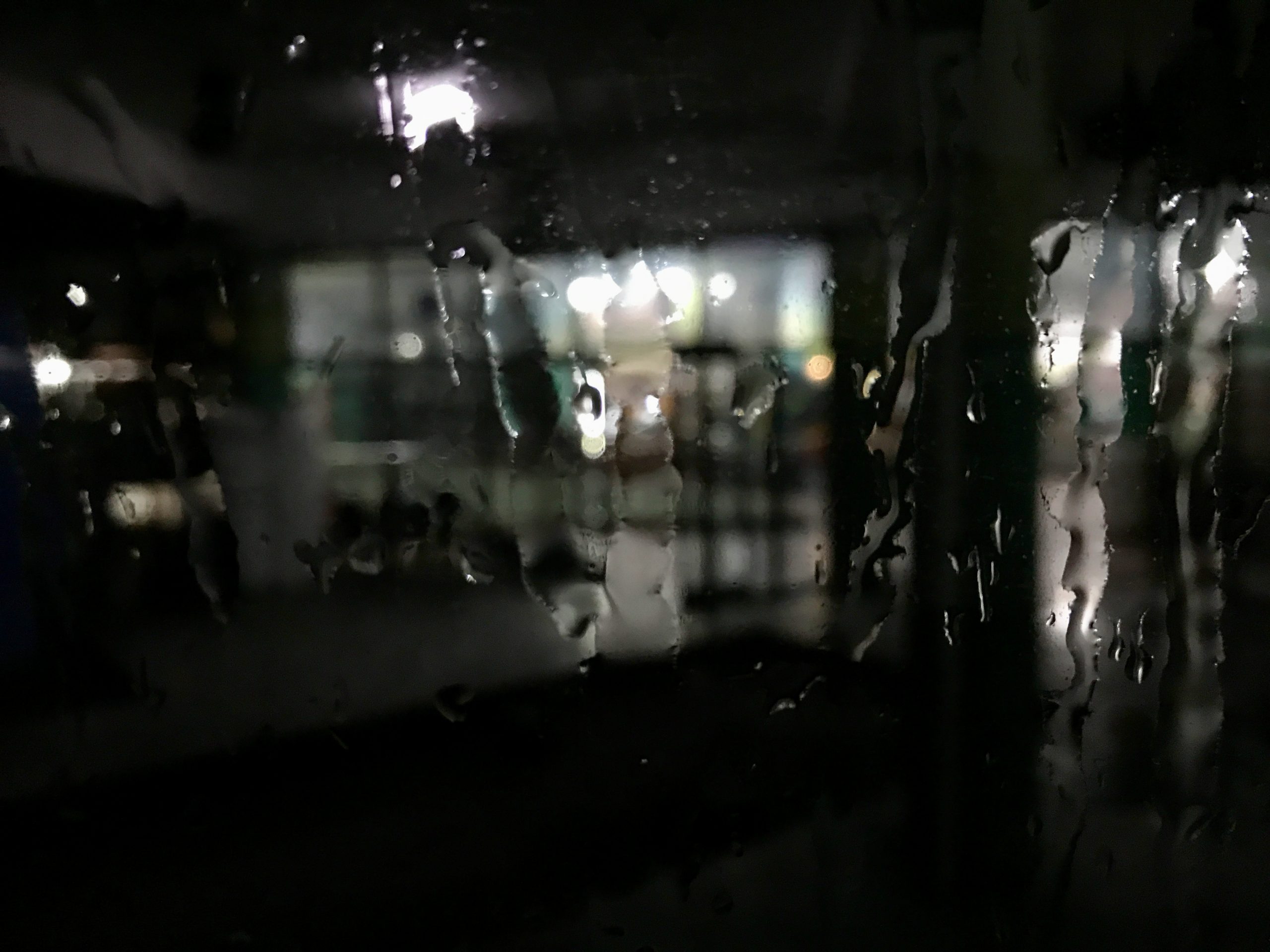 rain
rain
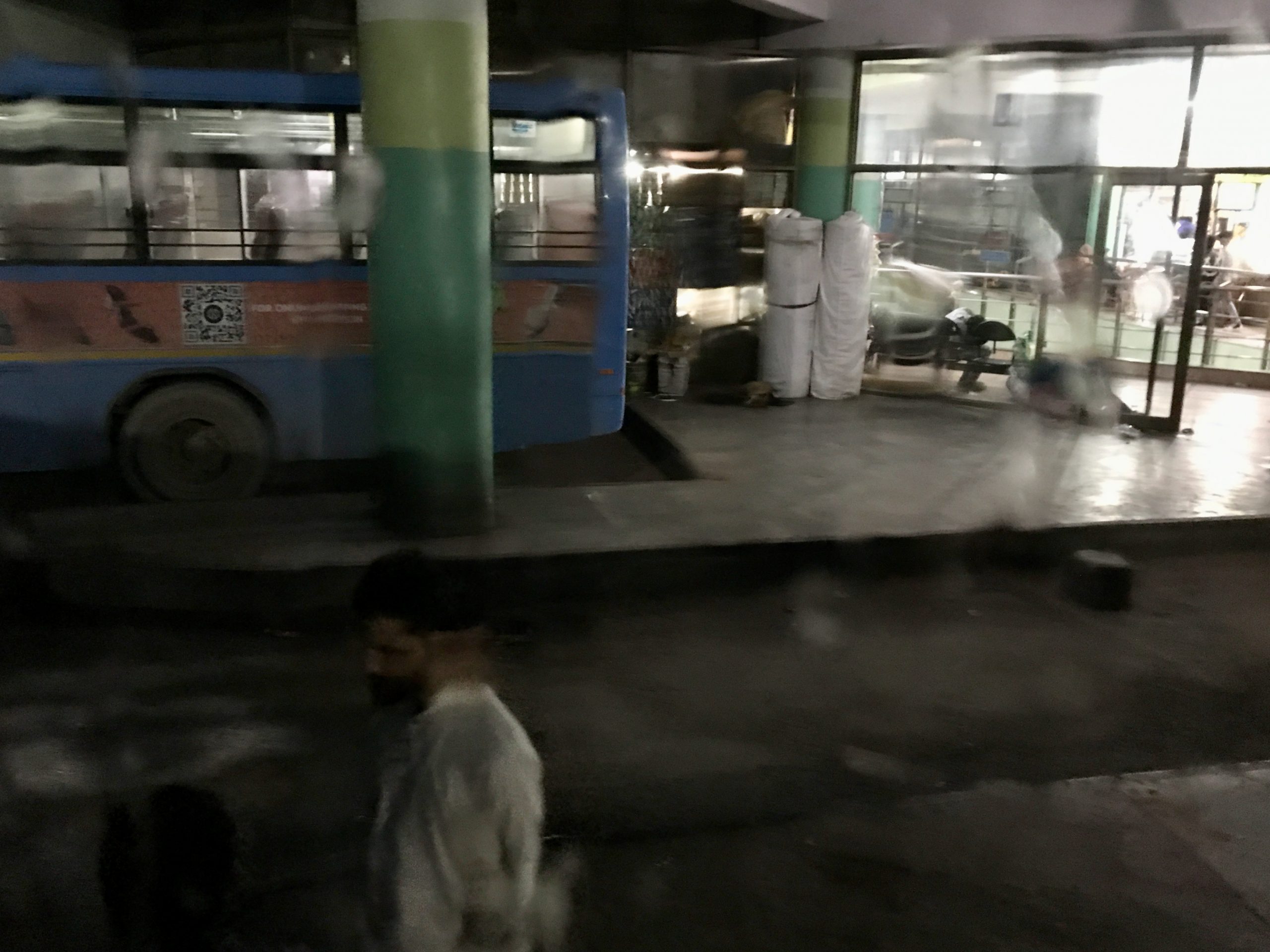 Busstand
Busstand
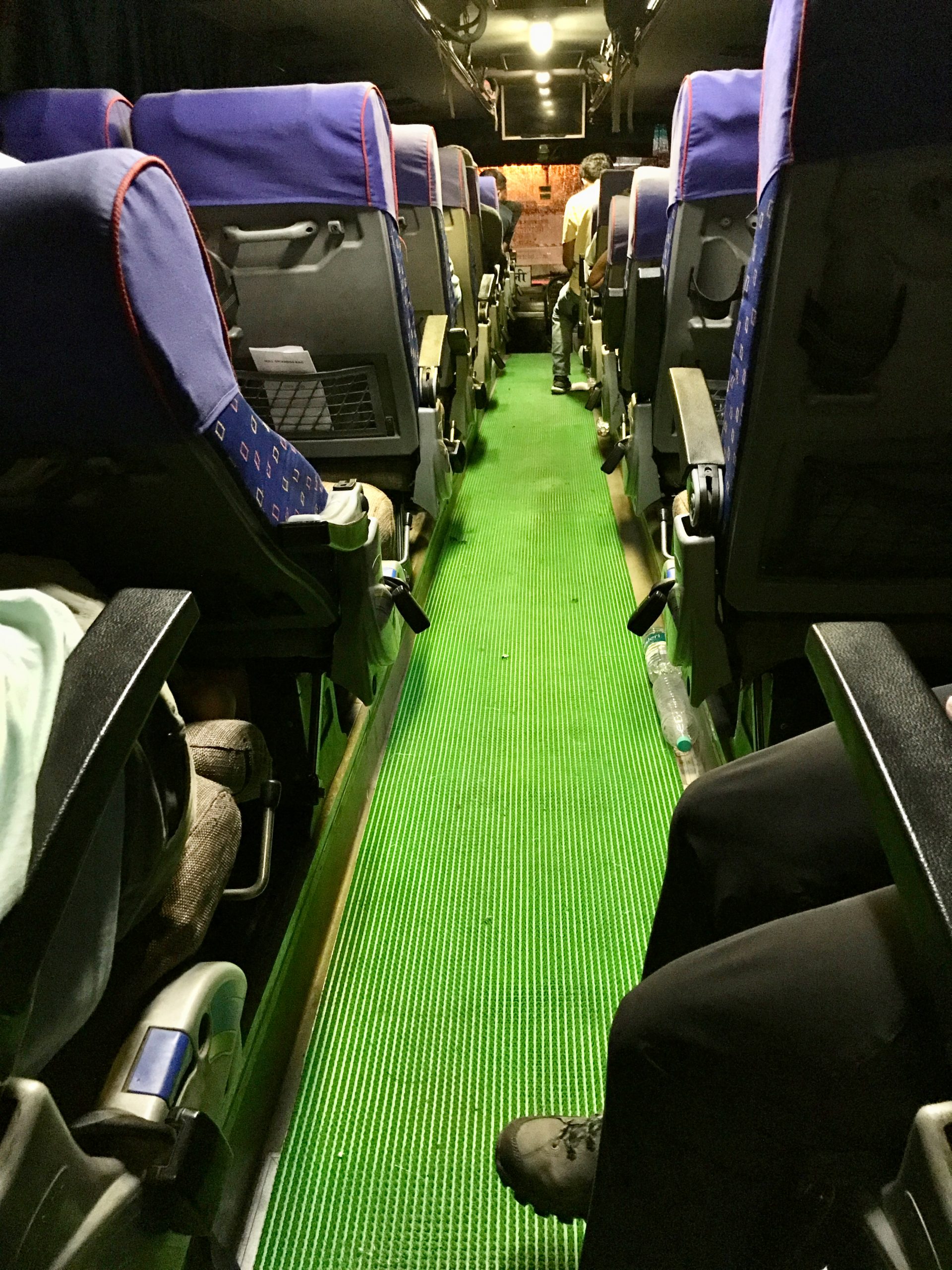 inside bus
inside bus
It was actually quite comfortable in the bus and we chugged through the winding mountain landscape down to the Sutlej River, which we now wanted to follow for longer towards Spiti. At the larger town of Rampur, the ride was over, we quickly changed to a full local bus and rumbled on to Jeori. There is a turnoff up the mountain to Sarahan. And since it was Sunday, there were hardly any local buses and after a wait with lunch etc. we treated ourselves to a taxi after all.
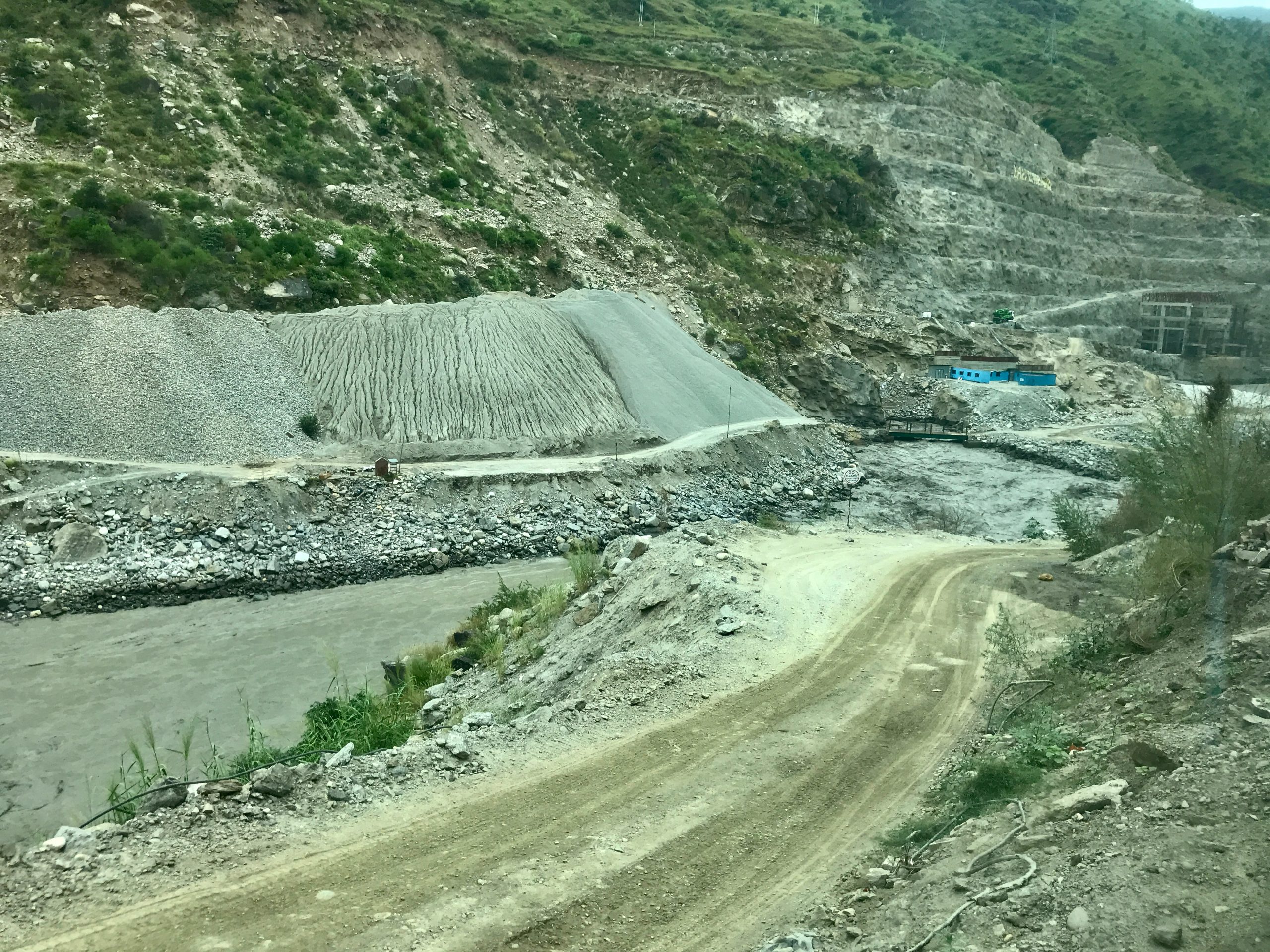 Sutlej Fluss
Sutlej Fluss
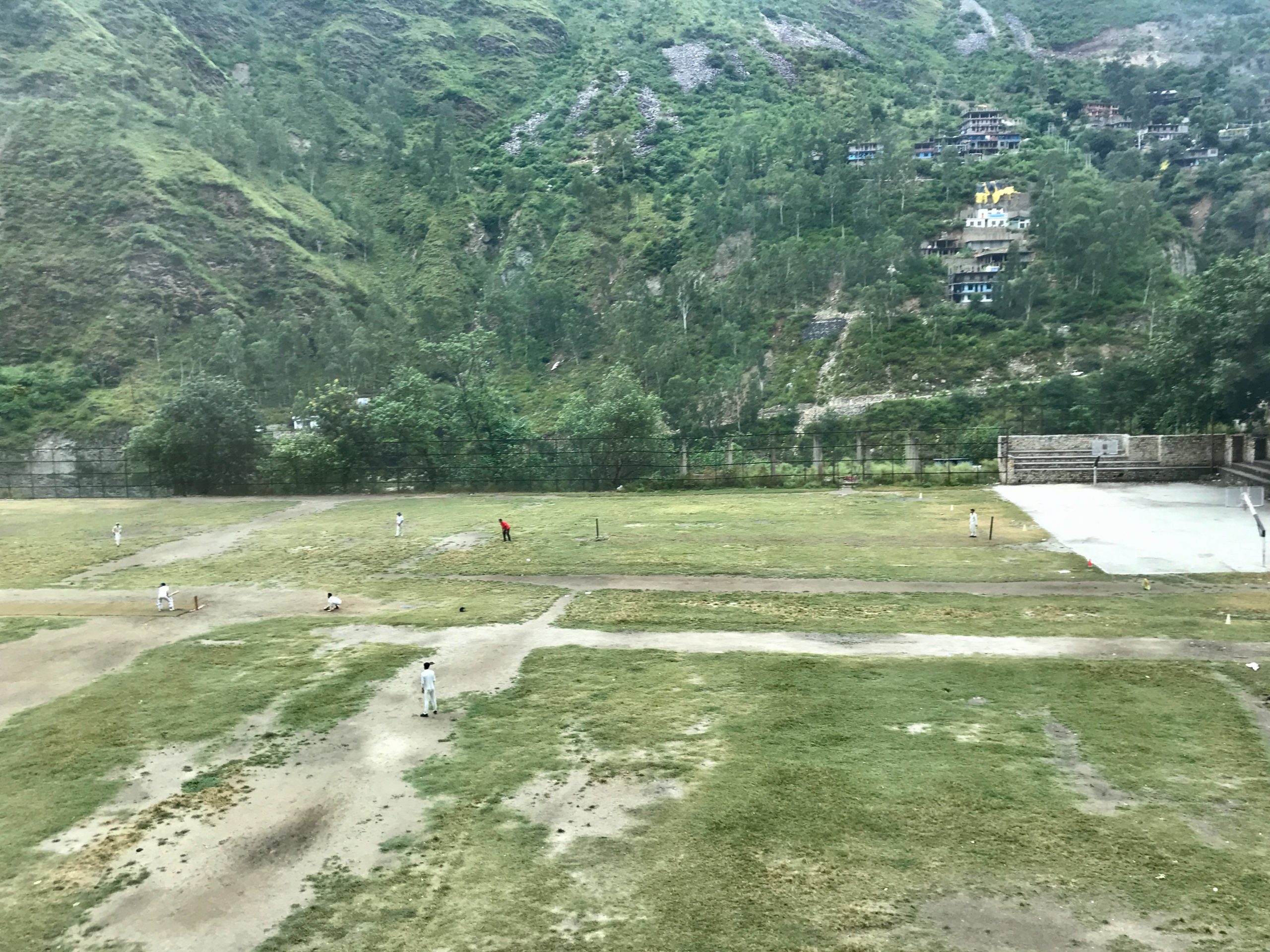 Cricket
Cricket
Sarahan belongs to the former principality of Bushahr. There was a time when the ruler had not produced a male heir before his death (as in Jhansi – but this was much much earlier). So the area was rulerless for the time being. At that time, Pradyuman visited the place Sarahan, where there was the magnificent temple Bhimakali. Pradyuman is mentioned in several sources as the son of the god Krishna. He came with his brothers but was the first to enter the temple at a certain time, which was interpreted as an omen that he was now to be the new ruler. But this is only one of several stories. Another is that the son of Pradyuman had an affair with the daughter of ruler Banasur and this is said to have enraged grandfather Krishna, who was supposed to be the father of Pradyuman, and he is said to have killed ruler Banasur and buried his head at the entrance of the temple. And so Pradyuman became the new ruler.
In my internet research, I have rarely found it as difficult as in all the information searches so far on this journey, as there are too many confusing entries. I’ll just give up trying to give a logical, clearer story here. But at least I have now established a connection to the Bhimakali temple.
Bhimakali is considered the patron goddess of the area. But when now how her temple was built etc. seems completely confusing to me. Fact is: it is a super beautiful temple with great architecture where many people go on pilgrimage. And here are my photos of it:
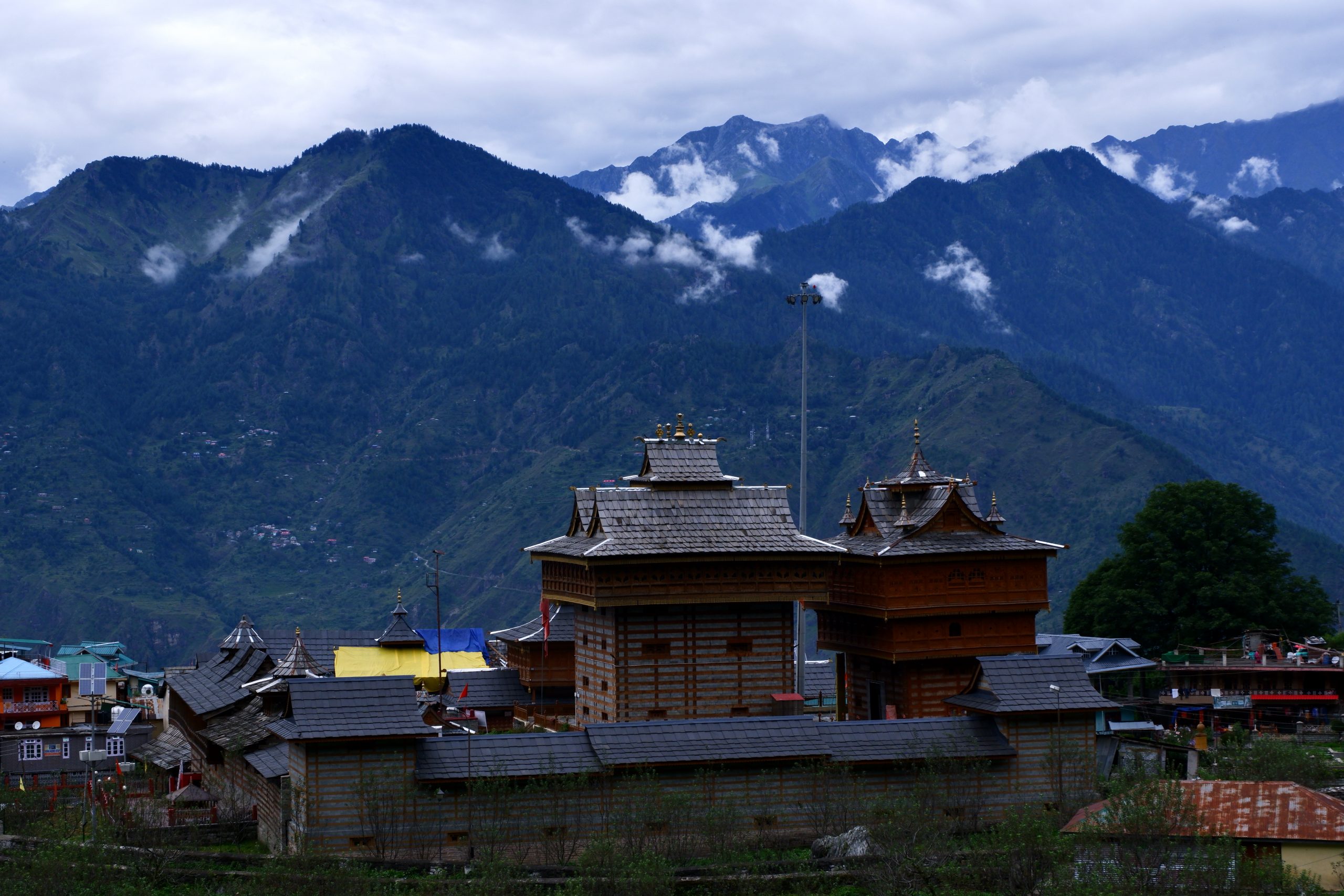 1
1
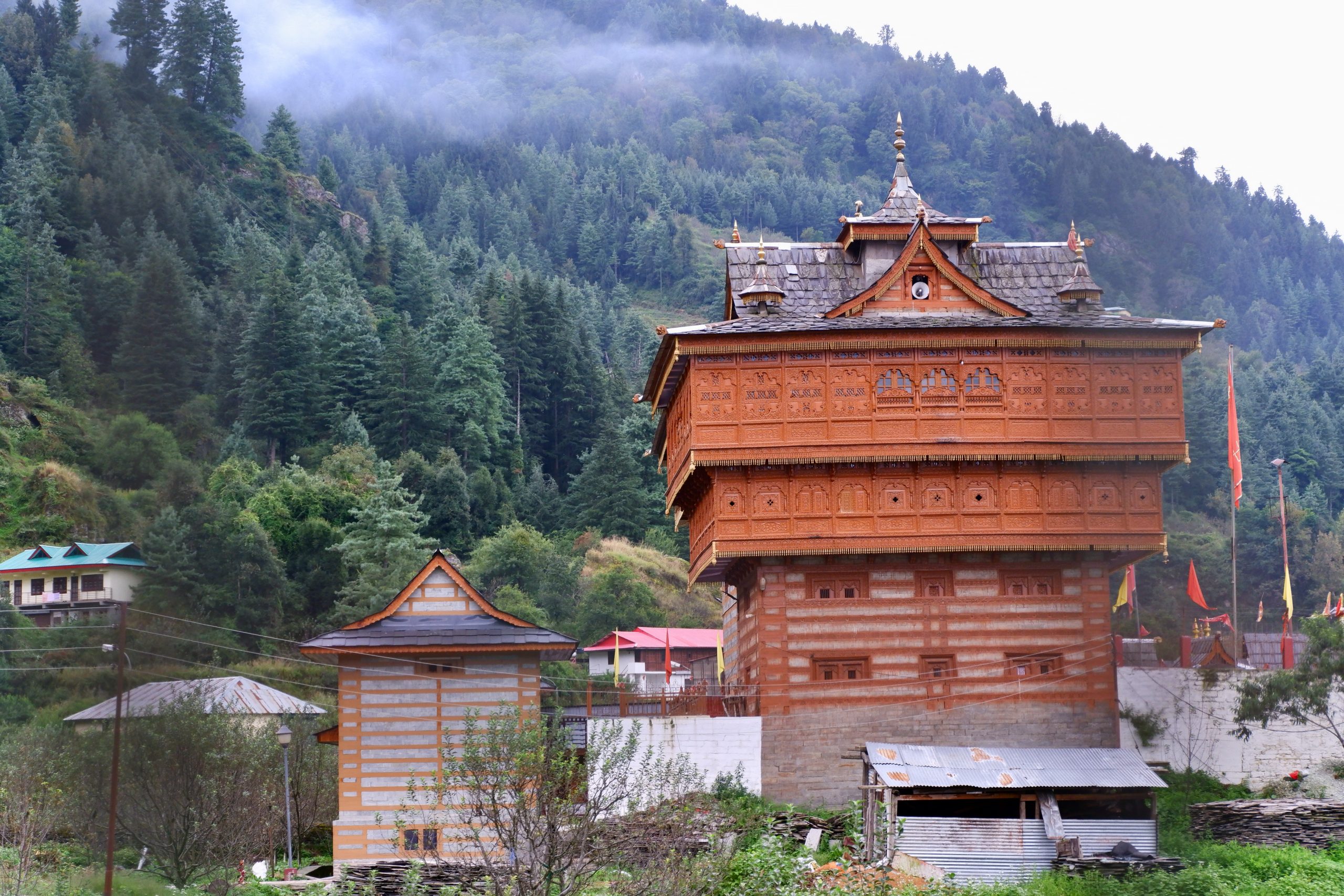 2
2
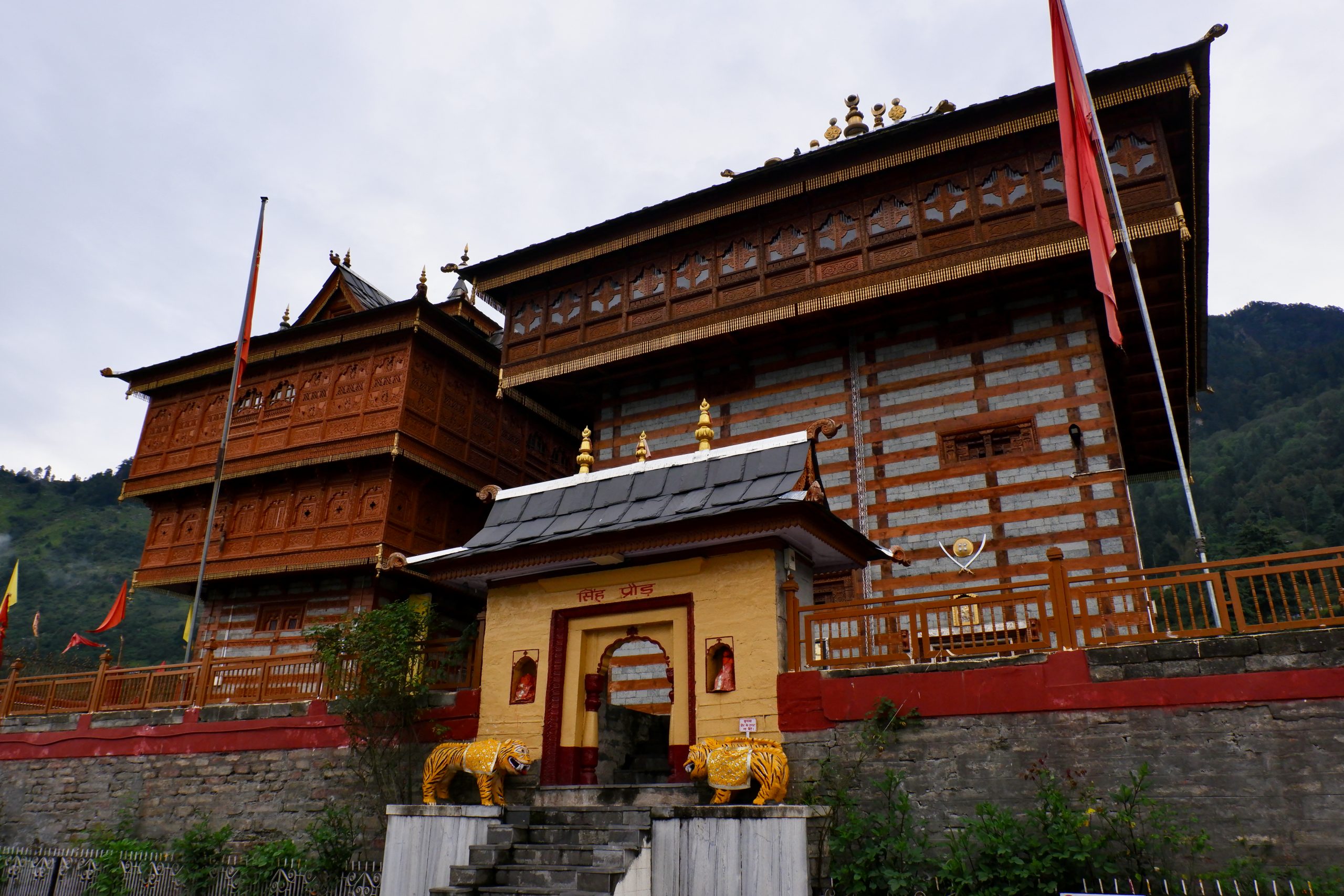 3
3
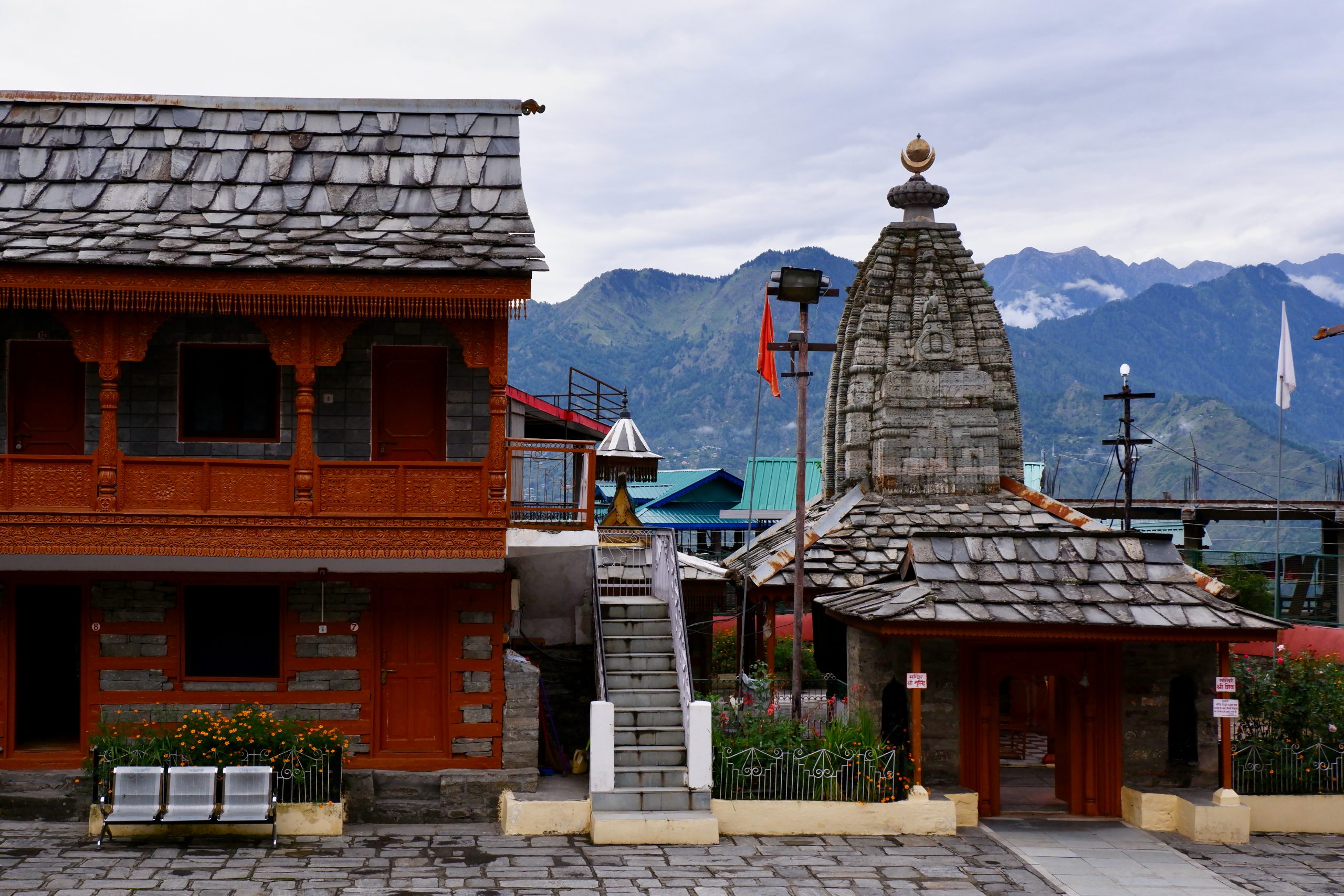 4
4
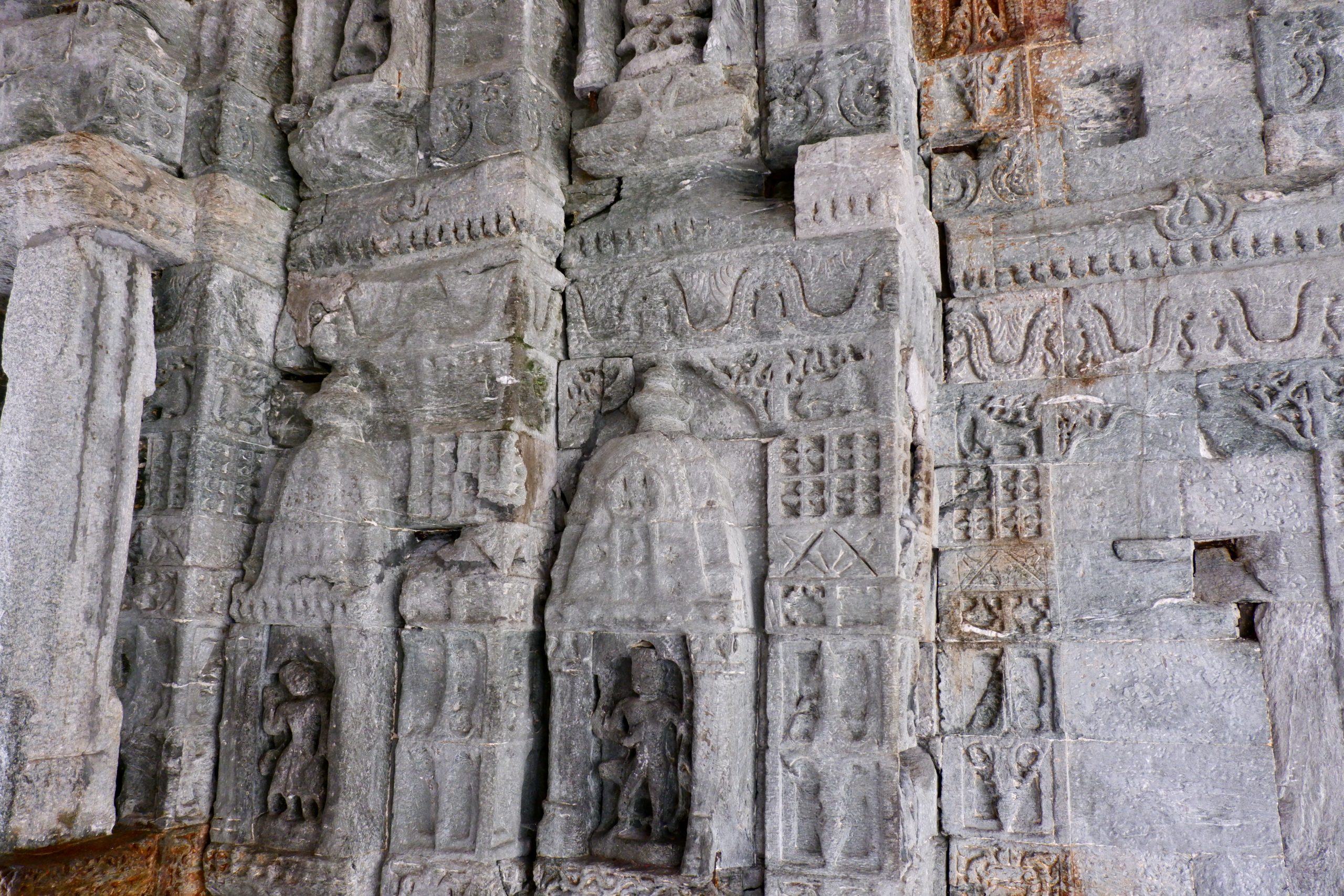 5
5
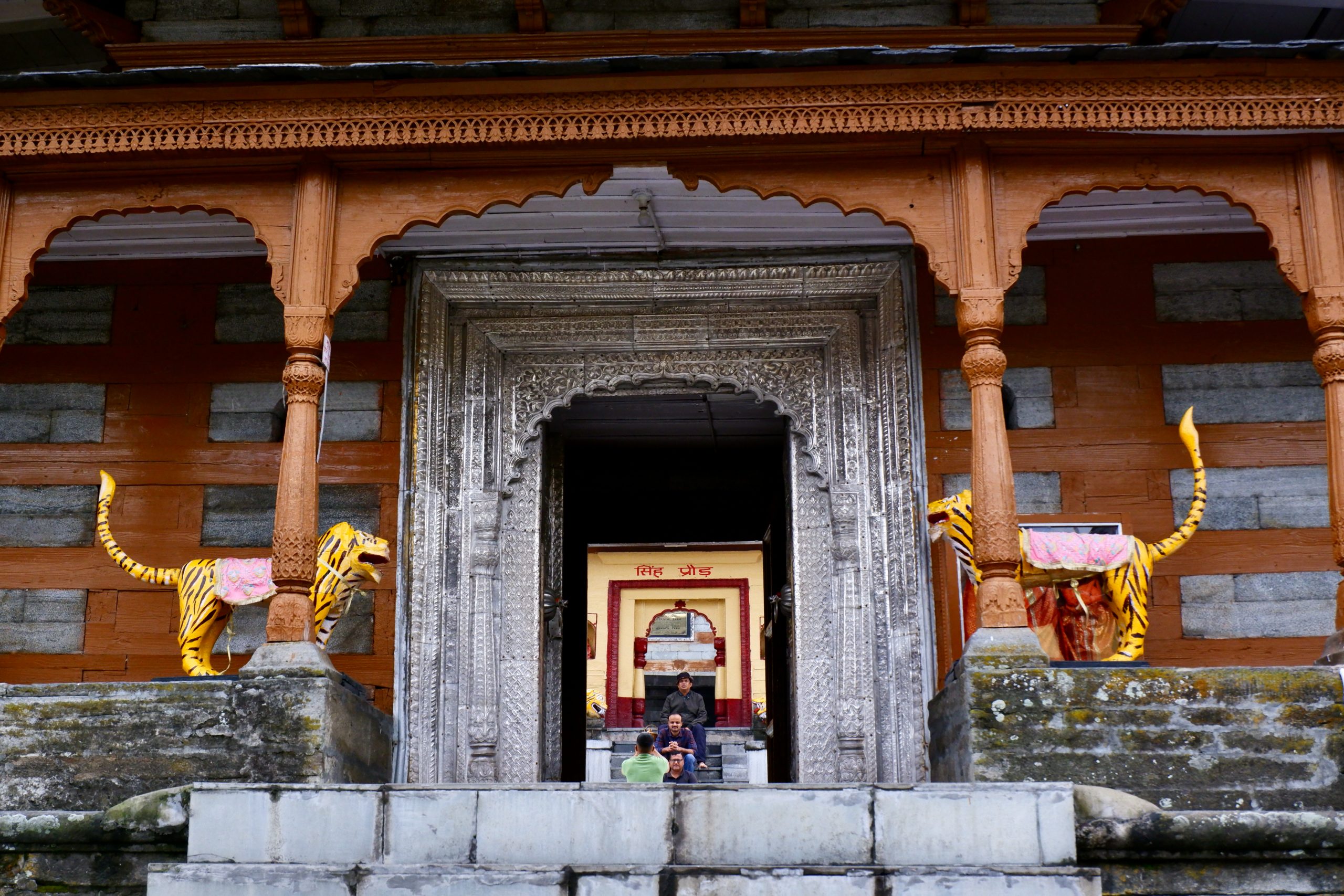 6
6
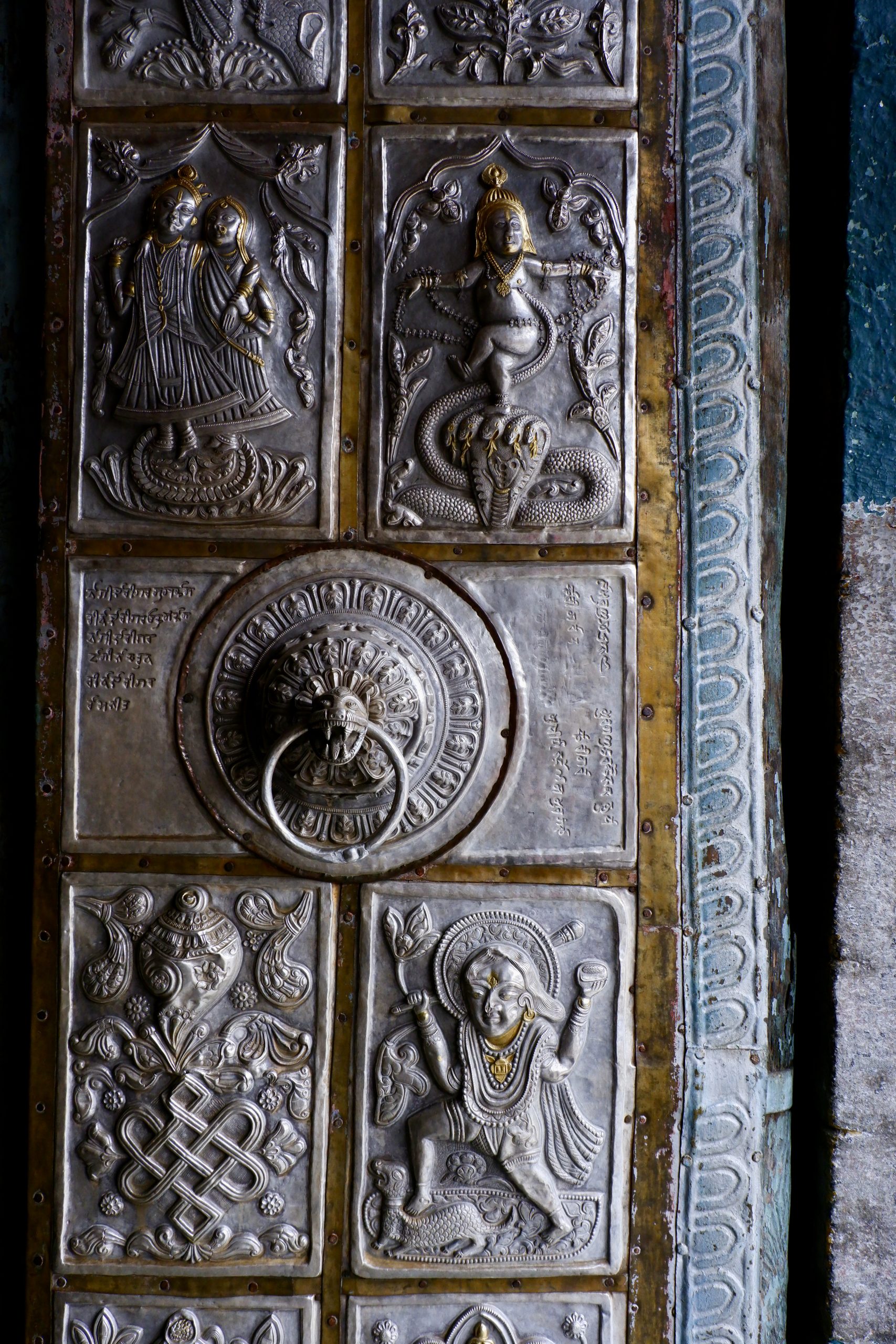 7
7
Who else Bhimakali is is also narrated differently. Someone describes her as a manifestation of the goddess Durga, someone else as one of the goddess Kali. This was a good opportunity to research Kali again and I find one of her stories so beautiful that I absolutely have to reproduce it here:
Kali is said to be the consort or wife of Shiva (now you could research the ladies in Shiva’s life again, but that all makes me far too fuzzy right now) and was quite a wild person. She is said to have danced wildly on the corpses after a bloody battle, drunk with blood. This made Shiva a little uncomfortable and the only thing he could think of to put an end to her wild behaviour was to lie down among the corpses as if dead. And as expected, Kali danced on top of him too – until she stopped and realised that she was, after all, on top of her consort. Out of sheer shock and shame, she stuck out her tongue. And that is how she is often depicted. Who wants to read more about Kali – here is a lot in Wikipedia.
The journey with 2 buses and 1 taxi was quite time-consuming – we arrived in the afternoon only. It did not feel like rest. On the other hand, the next day with just a relatively short distance should bring us to Reckong Peo/Kalpa, where we wanted to get the permit for Spiti and relax a bit anyway. Our host told us that we were lucky, the road would be reopened tomorrow for the first time after a violent landslide 2 weeks ago. We’d better start early, as there would certainly be a lot of people on the road.
What would that be like? In any case, another experience!
